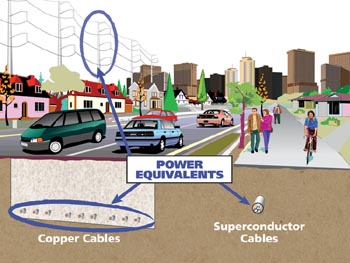Chiral Materials and Unconventional Superconductivity Group
Applied Superconductivity
The applied superconductivity research (past funded by DOE Office of Electricity Delivery and Energy Reliability) is related to modernization of the U.S. power grid. One direction of the modernization is replacement of normal metal (copper, aluminum) transmission lines with High Temperature Superconducting (HTS) cables. Our group concentrates its effort on studying fundamental thermodynamics of nucleation and texture development of thick YBCO layers. High-performance YBCO layer is a critical element of modern second generation (2G) HTS wire.
Major features of HTS power cables are:
- Up to 10 times more power capacity supports new generation and load growth
- High power capacity at lower voltage enables easier siting and reduced ancillary systems costs
- Ideal solution for breaking urban power bottlenecks
- Improved cost-effective control of power flow across meshed grids
- Extends the operating life of existing high-load corridor

Comparison of power equivalents of overhead power lines, copper underground cables, and HTS underground cables. Source: American Superconductor Corporation.
On-going research projects:
- Nucleation efficiency of industrial oxide buffers
- Isotropic HTS materials
- Third generation (3G) wire development




